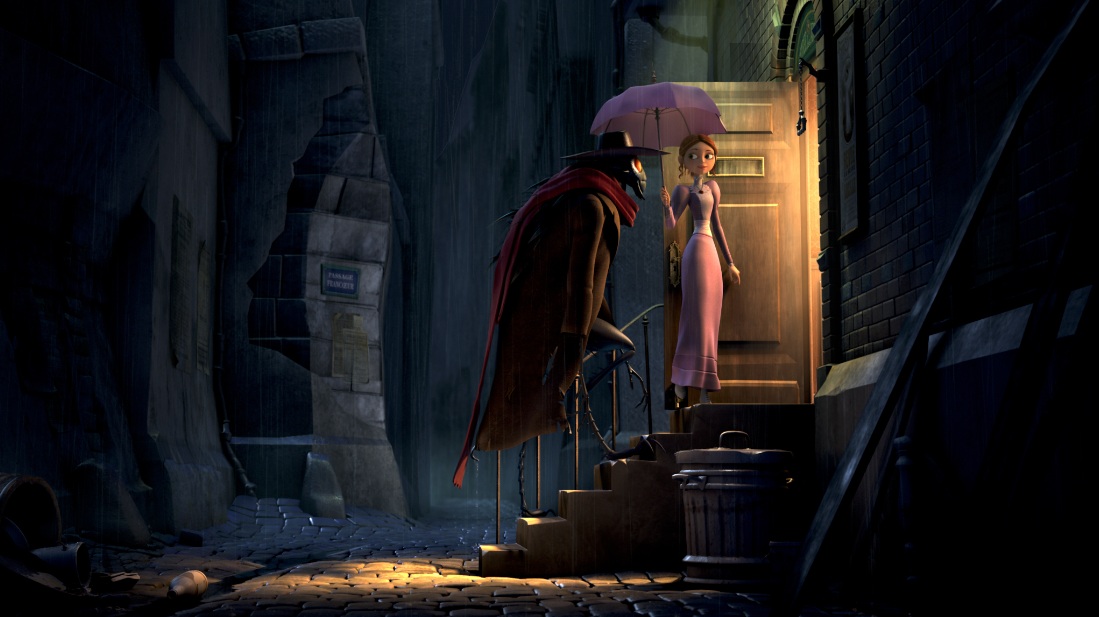THE AWAKENING
 Tuesday, August 28, 2012 at 9:14AM
Tuesday, August 28, 2012 at 9:14AM Stars: Rebecca Hall, Dominic West, Imelda Staunton, Isaac Hempstead Wright, Shaun Dooley and Joseph Mawle.
Writers: Nick Murphy and Stephen Volk.
Director: Nick Murphy
Rating: 3/5

Ghosts have had a tough time staying relevant lately. Vampires who glisten in the sunlight, werewolves with perfectly fur-less pectorals and wave after wave of zombie apocalypses have relegated the spectral apparitions of yore to bystander status in the supernatural world of movie frights. They raise their willowy visage to good effect on the odd occasion, most recently to frighten Harry Potter in The Woman in Black, but it’s been a long time since anybody really cared whether or not Haley Joel Osmant, or anybody else for that matter, could see dead people.
The Awakening, writer/director Nick Murphy’s debut film, does what most worthy cinematic ghost stories have done over the last 15 years and acknowledges the antiquated notion of spirits that glide amongst us. Rebecca Hall plays professional skeptic Florence Cathcart, a ‘ghostbuster’ for the population of post-WW1 London; the film opens with a title card that states that due to the war and illness, the year of 1921 was a veritable breeding ground for both ghosts and those wishing to exploit the grieving mood of the population. She is paid a visit by Robert Mallory (Dominic West), a teacher at the exclusive Rookford School where a child has died. Many believe the culprit is a ghost, who wanders the halls appearing to students and staff in the most unpleasant of ways (his face is later revealed, in one of the film’s more effective jolts).
Fully expecting to expose the Rookford Ghost as a schoolboy prank, Cathcart accepts the assignment and is soon holed up in the vast building (its myriad of staircases, chambers and passageways a work of great skill by production designer Jon Henson). She makes friends with the slightly too-charming matron, Maud (Imelda Staunton) until things going ‘bump’ during her first night leads Cathcart on an investigation that, at different junctures, becomes both frightening and dangerous.
Murphy and co-writer, genre veteran Stephen Volk (he penned the macabre 1986 Ken Russell film, Gothic), turn a good ol’ fashioned creaky-floorboard chiller into a mish-mash of buried memories and family secrets that sucks a lot of the fun out of the film’s third act. Films that have taken established haunted-house tropes and worked them into resonant psychological dramas in recent times include The Others, The Orphanage and the above-mentioned The Woman in Black, all of which are better films than The Awakening.
That said, Murphy exhibits a deft touch for a first-timer and can feel satisfied that his film honours the tradition of such spooky Brit works as The Haunting and The Innocents. He nails some stylishly creepy moments (the dollhouse whose tiny inhabitants react to the world around them in real time is particularly tingle-inducing), though he and Volk could have shown a little more narrative ambition and clarity. The Awakening may not bring those who dwell on the ethereal plain newfound pop-culture eminence, but it will keep them alive, at least on screen, for that little bit longer.









